In the ever-evolving world of engineering and design, staying ahead of the curve is essential. This is why CADfix 13 has garnered significant attention among both professionals and enthusiasts. With the introduction of an innovative application for 3D thickness, CADfix 13 aims to enhance the way we approach intricate engineering tasks.
CADfix 13 stands out due to its incorporation of Hybrid Geometry technology, a state-of-the-art development resulting from the esteemed Innovate UK/ATI COLIBRI research project. This technology serves as the foundation for the newly introduced 3D thickness application, offering a world of possibilities for engineers, designers, and simulation experts.
At the core of this innovation are Medial Fields, a concept with the potential to transform how we measure the thickness of engineering components while delivering a robust toolkit for modelling and simulation. The introduction of Medial Fields signifies a notable advancement, presenting a versatile and powerful solution to address a wide range of engineering challenges.
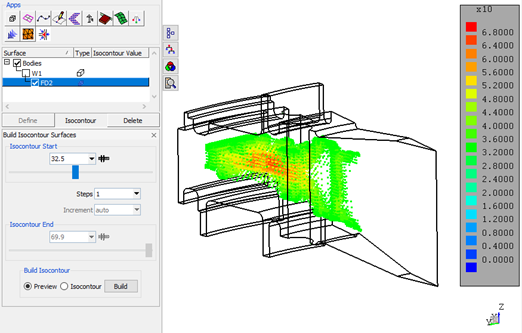
Figure 1: CADfix Thickness App applied to the interior of a solid model, with point cloud filtered to show the region above a thickness threshold.
The Power of Medial Fields
Medial Fields is a versatile technology that can for the basis for a wide range of capabilities, including:
- Rapid computation of an approximation to the Medial Axis Transform (MAT).
- Efficient identification of thickness minima and maxima, crucial for Casting and Additive Manufacturing (AM) applications.
- Generation of offset geometry for Casting hotspots or Near Net Shapes for AM.
- Processing facetted geometry and point scans in addition to Boundary Representation (B-rep) models.
- Detection of close proximity or collisions in assembly models.
- Extraction of fluid volume connectivity in medical imaging scans or pipe networks.
- Non-rigid registration of structurally similar shapes, even tolerant to dissimilar geometry or mesh topology.
- Encoding geometric shapes for Machine Learning applications (ML).
Medial Object vs. Medial Fields
The predominant geometry representation used for manufacturing and simulation remains the ‘Boundary Representation’ (B-rep). These are built from trimmed pieces of smooth geometric surfaces, lines and points. B-rep offers great precision regarding the outer surface of a part, but very little information regarding its interior, or the intervening space between parts.
CADfix has for many years addressed this difficulty with the Medial Object (MO). The MO is a set of non-manifold surfaces, lines and points similar to B-rep, forming a representation of the Medial Axis Transform (MAT) that is easy to manipulate with tools designed for B-rep models. The MO supports a wide range of applications, and carries detailed thickness information and links back to the defining object.

Figure 2: a) B-rep model of disc segment b) Medial Object c) MO + medial radius contours
While the MO has served its purpose, it has limitations, especially in handling small defects in input geometry. The MO cannot currently deal with other representations such as triangulations or point clouds, and is challenging to parallelize at scale due to its reliance on a specifically crafted tetrahedral mesh.
The COLIBRI research project facilitated the development of Medial Fields (MF), a game-changing alternative to MO, based on a new level-set/implicit surface-based approach.
MF starts either from a B-rep model or an existing triangulation. The facetted model is converted into an implicit representation using a signed distance field, that records the distance to the facetted geometry across a regular grid of points, or on an adaptive octree that can provide greater resolution in areas of interest.
Cells of the field are refined, while tracking the collections of triangles that are equidistant from the cell. This mirrors the inscribed sphere with touching sites in the B-rep based MO. Each cell carries an estimate of the medial radius, which gets increasingly accurate as the cells refine. Figure 3 shows a comparison of the B-rep Medial Object and the new medial field for the disc segment model. The cells shown are colored according to their distance from the defining object and capture the same information as the B-rep MO.
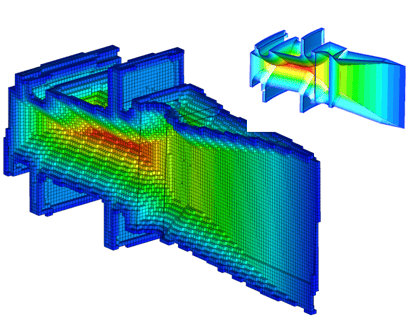
Figure 3: Medial Field representation of disc segment (inset: B-rep MO)
Medial Field Limitations
While Medial Fields within CADfix 13 represent a groundbreaking leap in 3D modeling and analysis, it's essential to understand that even innovation has its limitations. Here, we explore some of the boundaries that come with this revolutionary technology.
Medial Fields, by their very essence, provide an approximation of the true Medial Object. This approximation extends to the input geometry itself, which is typically represented as a triangle mesh. The refined medial cells can only occupy positions within a discretized grid. While this setup offers control over the fidelity of the refined field, higher resolutions can lead to longer runtimes. Fortunately, parallel processing helps mitigate this issue, but it may require substantial memory resources for detailed fields.
Unlike the B-rep based Medial Object algorithm, which constructs the network of medial vertices, edges, and faces in a consistently connected manner, Medial Fields require the recovery of connectivity information from the connected regions of cells after refinement. This process introduces complexities, particularly in models with intricate geometries.
Facetted Input
One of the key aspects of Medial Fields is their ability to operate on facetted models without the need for an underlying B-rep. This flexibility opens up the world of thickness analysis to various applications where B-rep models are unavailable. Facetted geometry is increasingly prevalent in fields such as medical imaging, scanned geometry, generative design, simulation, geographical information systems (GIS), and more.
Instead of relying on the natural segmentation of the boundary, as with B-rep models, Medial Fields track clusters of triangles and make decisions based solely on their shape. For example, in medical imaging, Medial Fields can efficiently extract fluid volume connectivity, offering a versatile tool for diverse applications.

Figure 4 shows a facetted model of a heart, with the medial field resolving chains of cells that follow the connections between the blood vessels and chambers.
External Medial Fields
The capability of Medial Fields extends beyond the boundaries of individual part models. For instance, they can be employed to measure the "thickness" of air volumes in complex urban models. This application proves invaluable for computational fluid dynamics simulations related to wind flow, gas dispersion, or even traffic pollution modelling. Medial Fields can be tailored to focus on specific subregions within a model while remaining sensitive to geometry outside these regions.
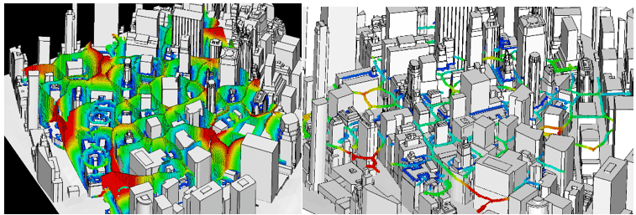
Figure 5: Medial Field for a facetted city model (left) and Medial Field cells at a fixed altitude (right).
Applications of the Medial Field
The power of Medial Fields is not just theoretical; it's being actively harnessed in various practical applications within CADfix. Let's explore a few key areas.
Casting Validation: In the realm of manufacturing, the thickness distribution within parts is critical, especially for processes involving molten materials. CADfix's thickness app utilizes B-rep models, facetted representations, and distance field representations to analyze thickness quickly and efficiently, aiding informed decision-making during design and manufacturing.

Figure 6: Medial Field used to determine thick regions in a cast part.
Additive Manufacturing: For additive manufacturing processes, detecting thin regions is paramount, since these regions may have reduced strength, and are more susceptible to issues such as warping, distortion, and mechanical failure. Medial Fields can help eliminate regions of the distance field that exceed critical thickness values early in the refinement process, saving computational resources and ensuring quality output. Additionally, Medial Fields can facilitate near-net shape generation, to help optimize specific 3D printing process.

Figure 7: Medial Field used to determine thin regions in a part for AM and a Near Net Shape.
Clearance Measurement: In mechanical assemblies, clearance measurements between parts are essential for clash and proximity detection. By measuring the thickness of air volumes within the model, Medial Fields can identify areas of concern, helping to maintain proper tolerances and prevent interference or wear issues.
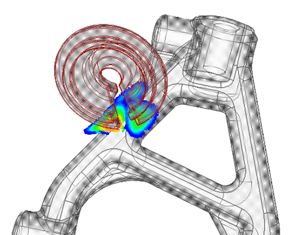
Figure 8: Medial Field used to proximity and potential clashes for assembled parts.
Medical Imaging: Medial Fields are a game-changer in medical imaging, enabling the extraction of topology and non-rigid registration, to support applications such matching scans from different individuals or aligning scans with B-rep-based templates. This opens up possibilities for morphing and classification in the medical field.
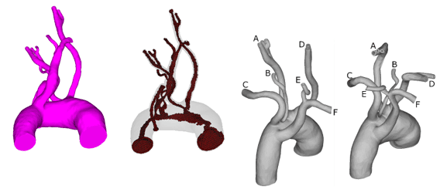
Figure 9: Medial Field used to extract internal topology of arteries and match dissimilar geometries.
AI/Machine Learning: Medial Fields offer a powerful way to represent 3D models and shapes for machine learning and AI applications, that usually rely on large databases of uniform data in the form of text or images. A Medial Field offers a way to store a rich description of the shape of a CAD model in a sparse voxelized form, with thickness being the primary value for each voxel. This data reduction enables increased speed or resolution when training an ML model or classifying new geometric models against large datasets of scanned geometry.
Conclusions
CADfix 13's Medial Fields represent a significant step forward. These versatile tools, developed through the COLIBRI project, have the potential to enhance engineering, manufacturing, and medical imaging practices. Whether you're working with B-rep or facetted models, Medial Fields bring a new level of precision and efficiency, expanding the possibilities in 3D modeling and simulation. The field of 3D geometry reasoning applications has seen a notable advancement, and it's all thanks to CADfix’s Medial Fields technology.
These advancements in Hybrid Geometry were made achievable through ITI’s participation in the COLIBRI project, with the support of Innovate UK and the Aircraft Technology Institute (ATI), project 46349.
